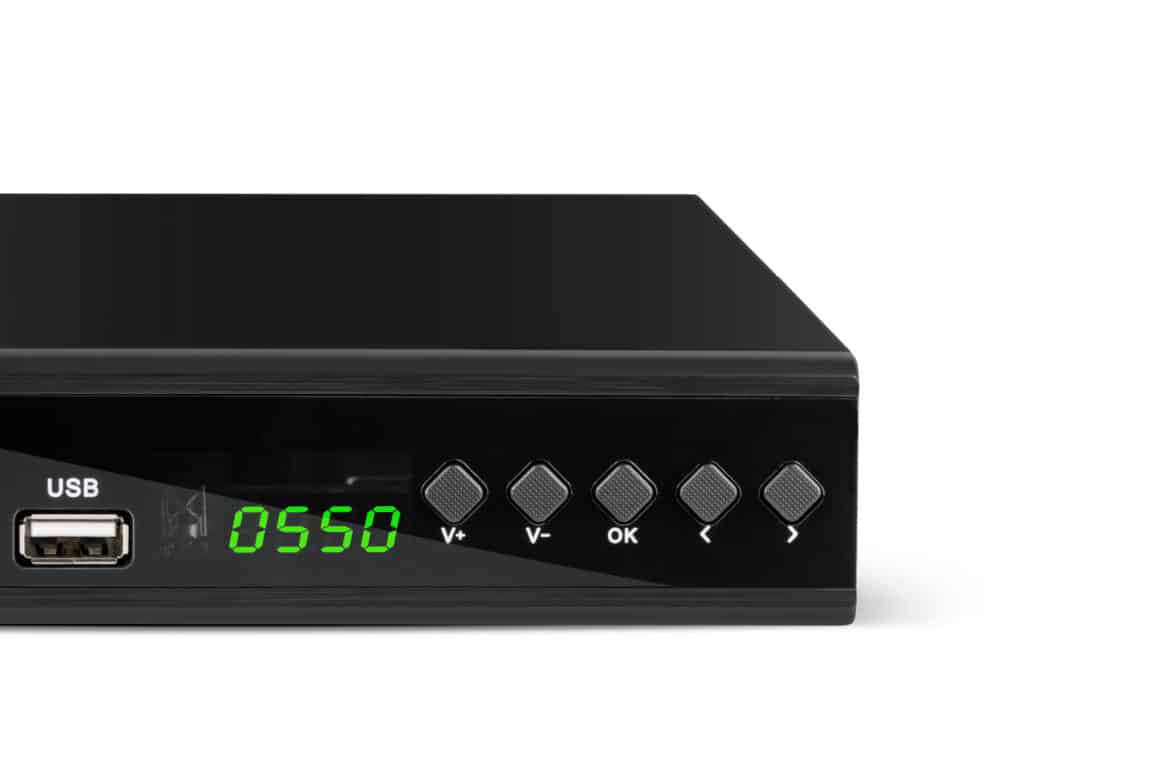There are a few differences between DVB-T and DVB-C. Both are different types of reception that allow you to receive and watch television programs.
DVB-T or DVB-C difference: DVB-T2 antenna television
DVB-T stands for “Digital Video Broadcasting – Terrestrial” and is nothing more than the well-known antenna television.
- This allows you to receive around 30 different channels. Depending on which region you live in, private channels (e.g., RTL or ProSieben) also broadcast their programs via DVB-T in addition to ARD and ZDF.
- We are currently in the transition phase from DVB-T1 to the DVB-T2 standard. DVB-T2 uses highly efficient encoding (H.265) of the video signal to accommodate a large number of channels in a relatively small bandwidth.
- By mid-2019, all broadcasts in DVB-T1 format will be switched off.
- In most cases, you will not need to install a new antenna. Most old antennas are compatible.
- Your old DVB-T1 receiver is not compatible with DVB-T2, which is why you will need a new set-top box or a TV with an integrated decoder. This is already the case with almost all current TV models. Look for the DVB-T2 logo when purchasing.
Cable television: DVB-C
“Digital Video Broadcasting – Cable” stands for cable television. In Germany, cable television has been privatized, which means it is not available free of charge. The two best-known cable providers are ‘Vodafone’ and “Unitymedia TV,” but there are also many small regional providers.
- In contrast to DVB-T, the first-generation standard is still in use in the cable network. Although DVB-C2 has been fully standardized since 2010, it is not yet in commercial use.
- This is mainly because there is no acute frequency shortage in the cable network yet. New requirements may arise with future developments such as UHD. Currently, SD and HD content is broadcast in parallel.
- Currently, every modern TV already has a DVB-C tuner built in. This means that you do not actually need an external set-top box, unless you want to use additional features that your TV does not offer.
DVB-T or DVB-C: What are the differences?
There are no extra costs for the new nationwide DVB-T2 if you only want to watch public broadcasters. For all private channels, you will have to pay around 60 euros per year. All programs will only be broadcast in HD, as additional SD broadcasting would only waste bandwidth.
- You can receive around 20 free public channels and another 20 private pay channels via antenna. Another new feature of the DVB-T2 standard is improved mobile reception.
- With cable providers, you will always have a monthly base fee, which varies depending on the provider. Internet and TV contracts are often bundled together. The costs usually range between €5 and €20.
- Cable providers usually offer around 100 channels in standard definition and 40 channels in HD resolution. Whether you pay a little more for HD channels depends on your local provider.
Transmission type, advantages, and disadvantages
DVB-T2 and DVB-C are two different transmission types for digital television, each with its own advantages and disadvantages in terms of reception quality and availability. Here is a detailed explanation:
- DVB-T2 transmission type (Digital Video Broadcasting – Second Generation Terrestrial): uses terrestrial signals that are transmitted through the air (via antennas), with the technology based on modern signal compression (HEVC/H.265). The system is designed for reception in fixed and mobile applications, such as in households using antennas or mobile solutions such as camping and vehicles.
- Advantages: High-definition HD/Full HD television with excellent picture quality. Wide variety of channels, including public and private programs. Free reception, as the signals are transmitted free of charge. Energy efficiency thanks to modern chipsets. Flexibility in device selection, e.g., with integrated tuners or external receivers.
- Disadvantages: Reception quality depends heavily on location and signal strength, e.g., in the case of obstacles such as buildings or hills. Interference is possible, especially with poor signals, and poor reception can affect image quality. Limited range in rural areas compared to cable networks.
- Transmission type DVB-C (Digital Video Broadcasting – Cable) uses wired transmission paths, usually coaxial or fiber optic cables. This allows the signal to be transmitted directly into the home, creating a stable and reliable connection.
- Advantages: Stable reception regardless of weather, obstacles, or atmospheric conditions. Excellent picture and sound quality with numerous channels, including premium and on-demand offerings. Reliability in urban areas thanks to wired access. Additional features, e.g., on-demand, provided by cable providers.
- Disadvantages: Cost of cable subscription, as a subscription fee is required. Limited flexibility in device placement, as the cable is fixed. Availability is limited to areas with existing cable infrastructure, often in cities.
- DVB-T2 is ideal for users in rural or hard-to-reach areas who are looking for a cost-effective, flexible solution, but with certain dependencies on signal quality. DVB-C is particularly suitable for users in cities who value a stable, high-quality connection without reception interference, but it does involve additional costs.

